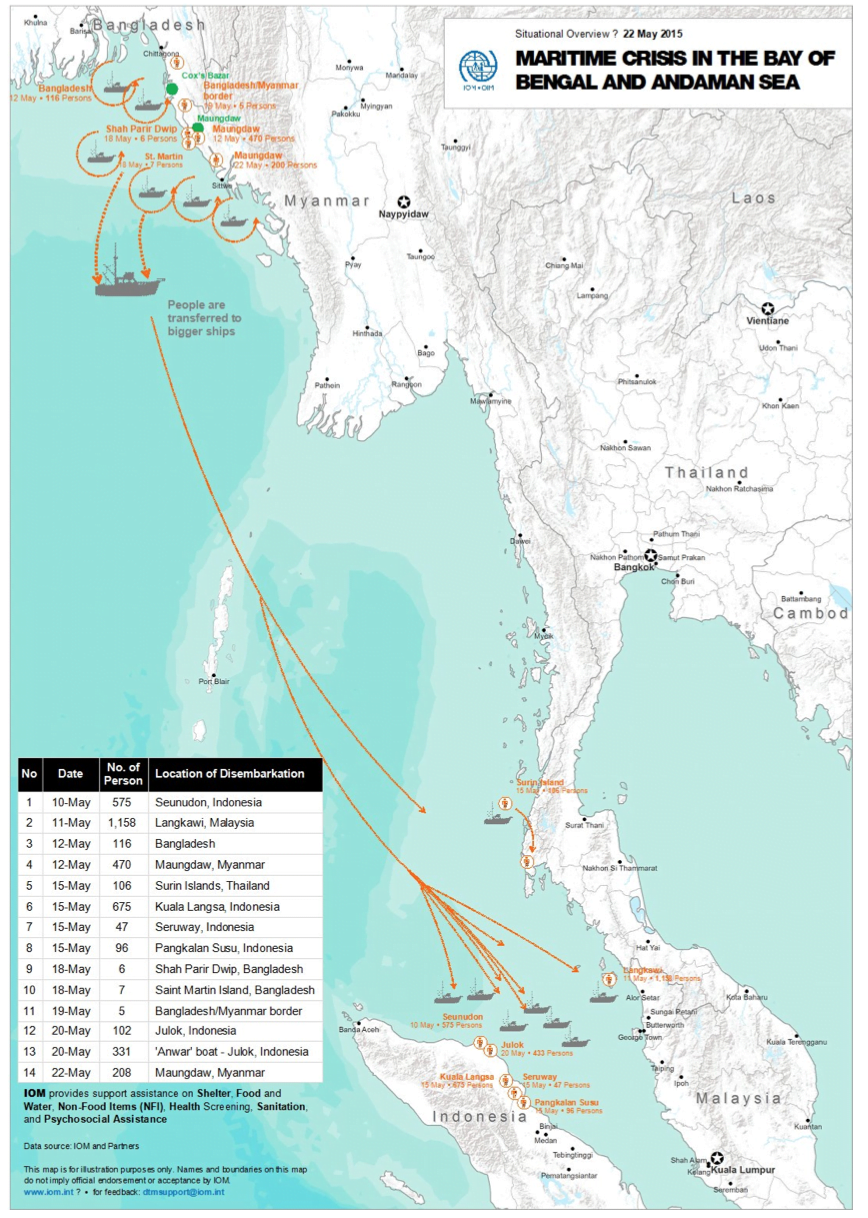Today’s map comes from the International Organization for Migration. It offers a detailed visualization of migration routes traveled by Rohingya refugees fleeing Myanmar and Bangladesh in risky sea voyages.

The IOM released this map today as part of a $26 million appeal to care for the basic humanitarian needs of 10,000 people affected by this ongoing crisis.
The appeal contains some damning data about the number of refugees that took this voyage. According to the IOM, as of 21 May 2015, “only 3,695 person departing from Myanmar and Bangladeshi migrants have managed to disembark leaving over 6,000 persons still unaccounted for.”
More from the IOM
An estimated 58,000 people undertook an irregular and dangerous journey by boat in the Bay of Bengal and Andaman Sea in 2014, joined by a further 25,000 in the first quarter of 2015. They are part of a complex, mixed migratory movement with components of refugees, stateless people and economic migrants. Unregulated and until recently inconspicuous, the scale of the movement has tripled since 2012 and the abuse of voyagers has grown obscene.
Men, women and children risk being starved, constrained, beaten and forcibly separated. Women and girls are particularly at risk of sexual violence. Ashore, but also aboard smugglers’ boats, they are detained, sequestered and held for payment – USD 2,000 on average. Non-payment can be fatal. The number of deaths that occur at sea is unknown, but likely higher than the 1.2% estimated to perish of disease or mistreatment at sea or in clandestine smuggling camps. IOM estimates that 1.9% of migrants may suffer from ‘beriberi’, a vitamin B1 deficiency that can lead to death, based on over 2,800 medical assessments since 2013
According to media reports, the number of migrant boats at sea has sharply declined over the last few days as refugees have paid smugglers to return them to Myanmar. This immediate refugee-at-sea crisis may be ebbing, but with the discovery of scores of mass graves along the Thai-Malay border this weekend, we are only beginning to understand the human rights catastrophe that has unfolded in the Andaman Sea in the first half of 2015.
Have 20 minutes and want a deeper understanding of the Rohingya Refugee Crisis? Check out this interview with Sarnata Reynolds of Refugees International.
